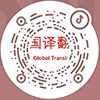Specific Solutions
Enterprise Articles of Association English Translation Pricing
As more Chinese companies expand internationally—whether through overseas investment, foreign partnerships, or cross-border compliance—translating the Articles of Association into English has become a crucial step. This document, foundational to a company’s governance and legal structure, demands a high level of linguistic accuracy and legal precision. Consequently, the pricing for English translation of Articles of Association reflects the complexity and responsibility of the work involved.
I. The Nature of Articles of Association Translation
The Articles of Association define a company’s internal regulations, shareholder rights, board structure, capital arrangements, profit distribution, and more. Unlike ordinary business documents, this is a formal legal text. Its English version is often submitted to foreign governments, courts, notaries, or partners—making accuracy, clarity, and legal compliance absolutely critical.
II. Key Factors That Influence Translation Pricing
1. Language Pair Direction
The most common request is Chinese to English (C→E). Since this direction requires more linguistic precision and legal alignment, it generally carries a higher rate than English to Chinese. If other language pairs are involved—such as Chinese to German, French, or Japanese—the pricing may increase due to limited translator availability and higher technical difficulty.
2. Length and Complexity of the Document
Articles of Association are typically lengthy, often containing dozens of articles and sometimes annexes or appendices such as equity structures or organizational charts. The more detailed and intricate the content, the greater the effort and time required, which will influence overall pricing.
3. Legal Terminology and Specialization
These documents are rich in legal terms derived from corporate and commercial law. Translators must not only understand the language but also be trained in legal translation to maintain accuracy and consistency. This requirement for domain expertise contributes significantly to pricing.
4. Intended Use
If the translated document is only for internal reference, the service may be simpler. However, when used for official purposes—such as foreign company registration, notarization, overseas legal filings, or regulatory compliance—certified translation with stamps and formal formatting may be required. This increases both the responsibility and cost of the translation.
5. Additional Service Requirements
Additional requests such as bilingual formatting, expedited delivery, legal proofreading, file conversion (e.g., PDF to Word), or formatting of scanned documents will also impact the final project cost.
III. What Translation Pricing Represents
Pricing for translating Articles of Association is not merely a reflection of word count or document length—it represents the risk, responsibility, and professional value behind a legally binding translation. It also includes the service provider’s investment in qualified translators, editors, legal consultants, and multi-step quality control.
Conclusion
Translating Articles of Association is not a basic language task—it’s a highly technical legal translation that requires expertise, discretion, and precision. When legal compliance and international communication are at stake, choosing a professional translation agency that understands both the language and the law is far more valuable than opting for the lowest price.
Keywords: Articles of Association translation, legal document translation, Chinese to English translation, certified translation, company bylaws, translation pricing standards, legal language services, multilingual corporate translation, AIRUI Translation


















